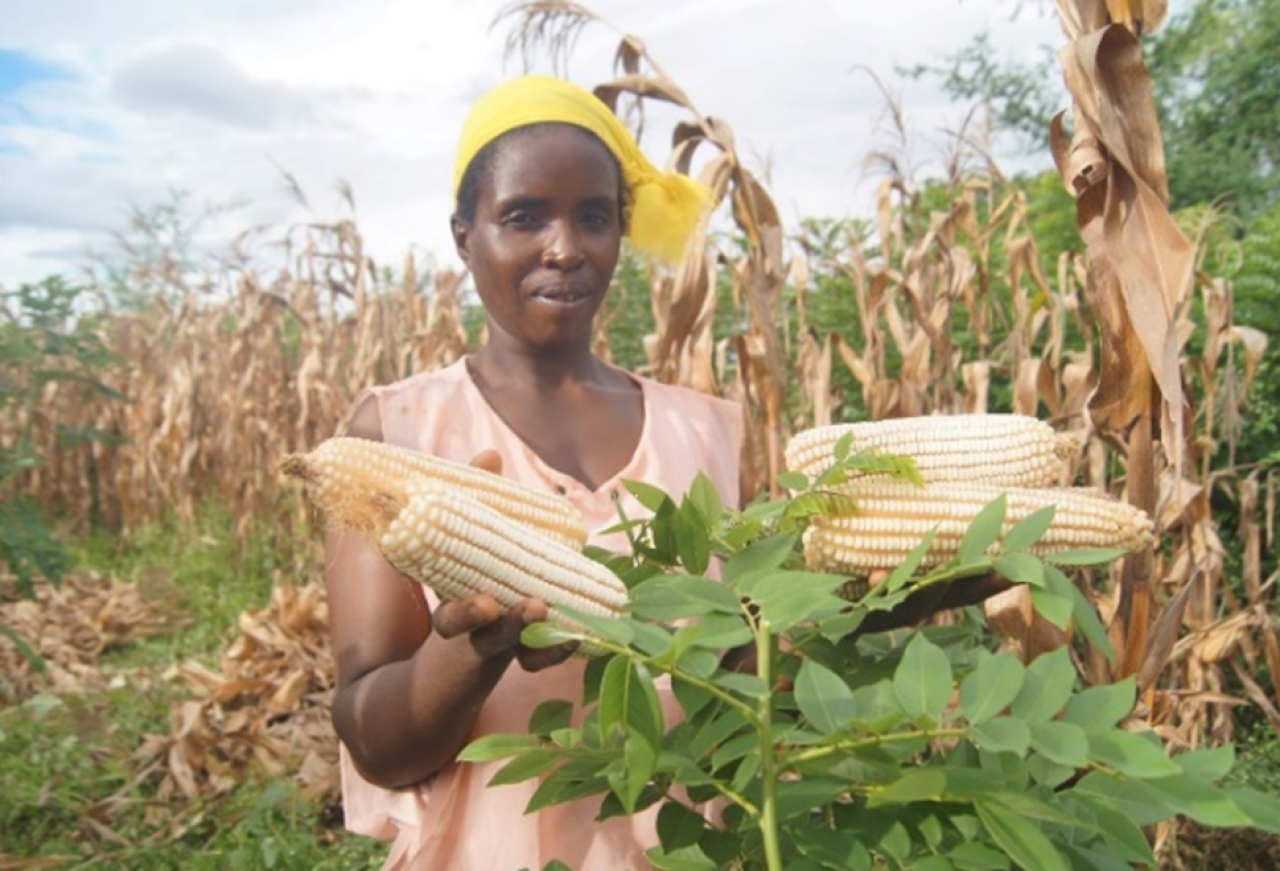Project update June 2022

A woman farmer harvesting maize from Gliricidia plots. Photo: ICRAF
Farmers are able to produce 2-3 times more crops through intercropping with Gliricidia in contrast to the farmers practice without Gliricidia.
Intercropping maize with groundnuts/soybeans and Gliricidia sepium maintains soils fertility and helps to produce healthier food. Farmers in Zambia are showing interest to adopt this agroforestry practice thereby reduce fossil-based fertilizer application which at the same time increases organic carbon in the soils. The NIBIO coordinated agroforestry project in Zambia is engaging hundreds of farmers in five chiefdom in eastern Zambia. The implementing partners (ICRAF, IITA and COMACO.) are directly engaging several farmers especially women to demonstrate the multiple benefits of intercropping with the Gliricidia leguminous tree.
A common soil management practice by farmers in the project area is mulching leaf biomass from Gliricidia (Gliricidia sepium) trees by spreading on the soil surface. Such practices do not facilitate decomposition of nutrients by microorganisms and readily available for plant uptake. To address this, the project introduced the practice intercropping maize with nitrogen-fixing legumes (groundnuts and soybeans) and Gliricidia trees where the leaves are chopped and incorporated into the soils.
Farmers are able to produce 2-3 times more crops through intercropping with Gliricidia in contrast to the farmers practice without Gliricidia. Farmers have benefited from a cost-saving of kwacha 2500/ha by avoiding chemical fertilizer costs through the adoption of fertilizer-enriching Gliricidia leguminous trees. Most importantly, soils with Gliricidia have more minerals in the soil with higher nutritional content of crops than those fertilized with chemical fertilizer. Gliricidia leaves produce high-quality green manure and contain as much as 3-4% nitrogen in their leaves and a number of other important mineral nutrients.


